- The new Volkswagen Tiguan comes with tons of standard high-tech features.
- Available luxury amenities include massaging seats.
- This compact SUV has serious passenger room and is a surprisingly good value.
2025 Volkswagen Tiguan First Drive: VW Nailed It
VW creates a surprisingly value-focused compact SUV
The Tiguan is Volkswagen's biggest seller, so there's a lot riding on this SUV. For 2025, engineers and designers were tasked with updating the popular SUV, giving it new tech, modernizing its features and preserving its driving qualities, all without screwing up VW's biggest moneymaker. No pressure, right?
The good news is that VW's team got the memo, and after an initial drive of the new Tiguan in Montana, I think they nailed it.
First impressions matter
I was pleasantly surprised when I sat in the new Tiguan for the first time. The upscale interior gives off Audi vibes, and when you reach out to touch surfaces, they feel as good as they look. VW even uses real American walnut wood trim on the dash. The seats are covered in cloth, fancy synthetic leather or real quilted Varenna leather in the top-of-the-line SEL R-Line. Those leather chairs are also ventilated and have two-zone heating, meaning the seatback and cushion can be heated separately. Both front seats also have a multipoint massage system, something usually reserved for hoity-toity luxury brands.
The Tiguan is practical too, as an SUV needs to be. There's plenty of front seat space and three-position seat memory for the driver and passenger on the SEL R-Line. The roomy rear seat passes the self-behind-self test for my 6-foot, 1-inch frame. If you fill your rear seat with kids in car seats, the easy-access lower anchors and plentiful room should make getting them in and out a snap. There are even vents and two USB-C ports back there, and on the top trim, the outboard positions are heated. This Tiguan drops the third row from the previous generation, but it was pretty useless anyhow and won't be missed.
As for cargo space, VW doesn't have final specs just yet, but it's a safe bet it's around the same as the current Tiguan's 37.6 cubic feet. The underfloor area is mostly taken up by a spare tire, but deep pockets on either side, plus an additional small well on top of the left wheel hump are handy for smaller items. Also handy: the rear seatback releases mounted in the cargo area.
High-tech but not in your face
Automakers know we like our gadgets, but they haven't always been good at making their cars feel as techy as possible without annoying us. VW's recent efforts have been a mixed bag at best, but the new Tiguan is a definite step in the right direction.
First is the standard 10.3-inch digital instrument panel, which presents its info in a clear and sharp way, along with different configurations for various drive modes. (More on those in a moment.) The standard 12.9-inch touchscreen is already bigger than most competitors, but the SEL R-Line gets upgraded to a whopping 15-inch display that dwarfs just about anything else you'll find in the class. There's a learning curve, of course, but overall both touchscreens are straightforward enough to use and have sharp and clear graphics.
I'm happy to report that Volkswagen is weaning itself from touch-sensitive controls. There are real buttons on the steering wheel now — no more of that haptic-feedback nonsense — and the big multifunction knob on the center of the dash deserves a quick callout. It primarily controls audio volume, but click it and it lets you change your drive modes between Eco, Comfort, Sport, Custom, Offroad and Snow. Cooler still, the top of the knob is actually a tiny touchscreen; give it a swipe and you're now controlling the ambient lighting scheme on SE and higher trims. It's a cool and clever way to integrate several functions into a single control and simplify the dash design without overdoing it. VW still uses touch controls to change the temperature on the climate control, but the touch targets are big and responsive enough that their presence is not a deal-breaker.
Like many of its competitors, Volkswagen is making its suite of driver assist systems standard equipment even on the base S trim. Better still, it's a robust system that includes advanced automatic emergency braking that also detects pedestrians and cyclists, lane keeping assistance, parking sensors, adaptive cruise control and blind-spot warning. I tried the systems out on my drive, and the Tiguan had no problem following other cars and staying in its lane; it was briefly confused by an asphalt seam at one point, but in fairness to VW those trip up a lot of competitors' systems too.
A head-up display is also available on upper trim levels, and its colorful readout is useful for keeping your eyes on the road. I just wish it wasn't so sensitive to polarized sunglasses.
Not fast, but nice to drive ... I think
Volkswagen says it cut 170 pounds from the Tiguan, and its 2.0-liter turbocharged engine now puts out 201 horsepower, an increase of 17 hp from before; torque remains the same at 221 lb-ft in AWD models but drops to 207 lb-ft in front-wheel-drive models. Front- and all-wheel-drive Tiguans use an eight-speed automatic transmission.
Edmunds' test track will reveal any changes in 0-60 mph times, but the Tiguan doesn't feel particularly quick, even in the most aggressive Sport mode. I'd blame weight if there isn't a noteworthy improvement over the old car's 8.9-second time. Despite the improvements, the Tiguan is still one of the heavier vehicles in its class, and a delayed response from the engine when you floor the throttle doesn't help matters. Speed demons will want to wait for the 268-hp SEL R-Line Turbo, arriving sometime late this year.
Acceleration aside, the Tiguan feels quite good behind the wheel. At cruising speed it's commendably quiet, with minimal wind noise. Throw in the massaging seats, excellent Harman Kardon audio system and advanced driving aids and the Tiguan has the makings of an excellent road tripper. The roads on my route were wonderfully curvy and well maintained for the most part, but the few rougher sections suggested the Tiguan might be on the stiff side.
The good news is that it feels like the stiffer ride translates to good handling. The Tiguan stays controlled around corners, with some body lean but few bounces over midcorner bumps. Sport mode makes the throttle and shifting more aggressive and gives the steering more heft, but it doesn't change suspension firmness. Overall the Tiguan never puts a foot wrong. It'd be nice if the modes altered suspension stiffness, and I'm surprised there were no shifter paddles as well, but overall the Tiguan seems like it could hold its own in a corner.
That said, I'm equivocating here because Montana's famously big skies were gray and dumping rain during my drive. Foul weather plus an unfamiliar car on unfamiliar roads is a great way to test things like airbags and rollover protection if you're not careful, not to mention job security. So a final judgment on handling and ride quality will have to wait until Volkswagen drops off a Tiguan at Edmunds HQ. The wipers worked great, though.
VW = Value Winner?
Massaging heated and cooled seats. Customizable ambient lighting. LED light bars and illuminated front and rear logos. Real wood trim. It all sounds like something you'd find on a luxury vehicle, and for a luxury price, but surprisingly Volkswagen has held the line on the Tiguan's pricing.
Prices start at $30,920 for the base front-wheel-drive S trim, including the $1,425 destination charge. That still gets you all the driver aids, the digital instruments and 12.9-inch touchscreen, wireless Apple CarPlay and Android Auto with cooled wireless charging, a bunch of USB-C ports and a seven-speaker audio system. On the high end, the loaded all-wheel-drive SEL R-Line with all the fancy features I mentioned works out to $41,180; my test car was an extra $850 thanks to its Avocado Green paint job.
That price spread is neither the least nor most expensive in the class, and it represents a surprisingly solid value, even at the low end. I'm as curious as anybody to drive it on more familiar roads. But even this brief experience shows Volkswagen deserves credit for making the new 2025 Tiguan a pleasant-driving, feature-laden, near-luxury experience at a competitive price.

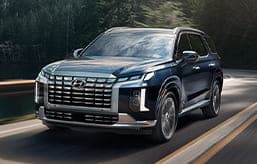
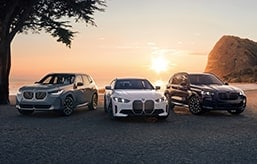
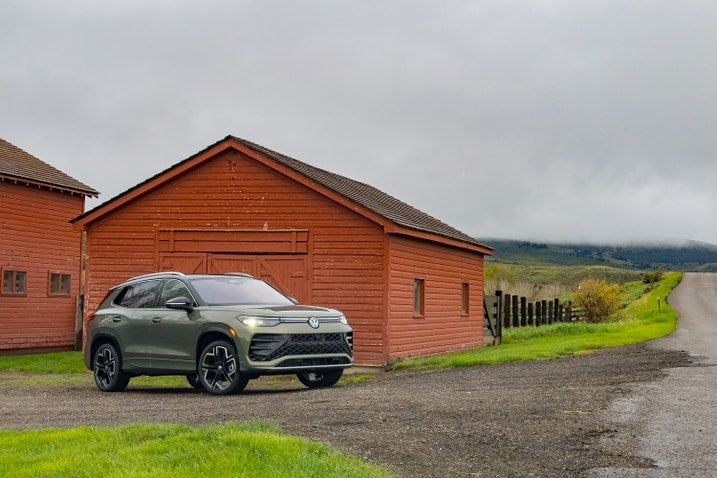

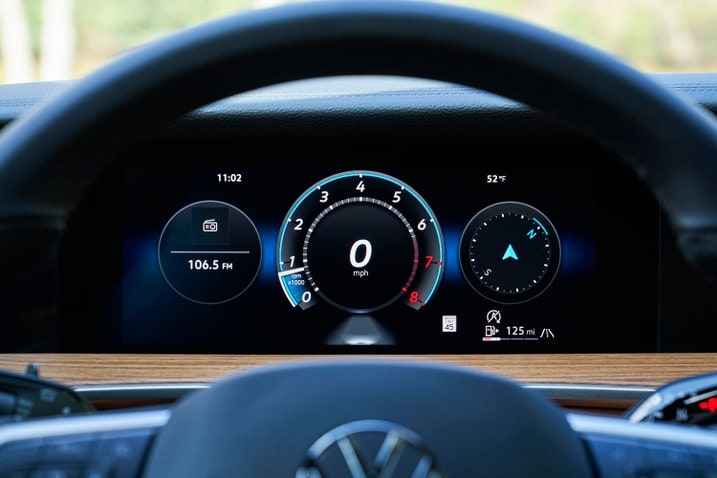
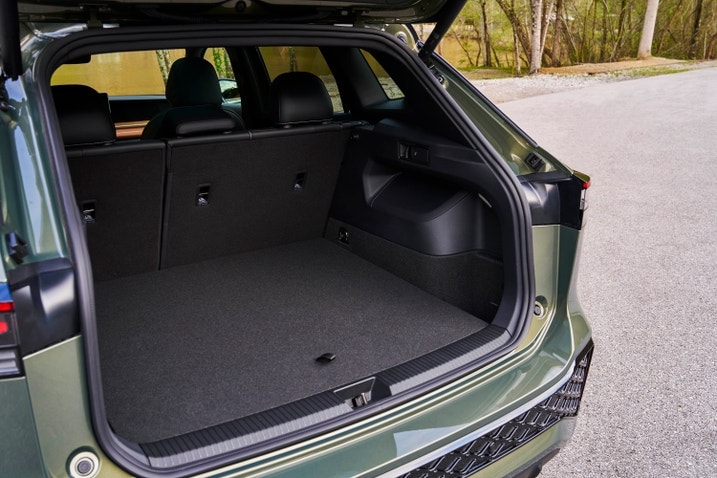
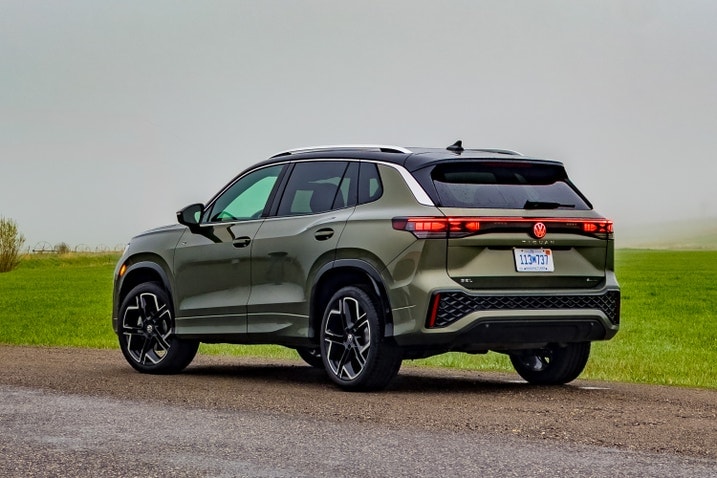
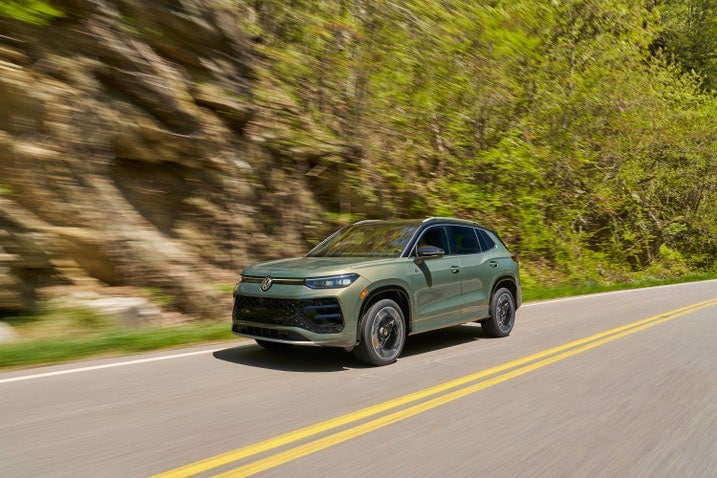
 by
by  edited by
edited by